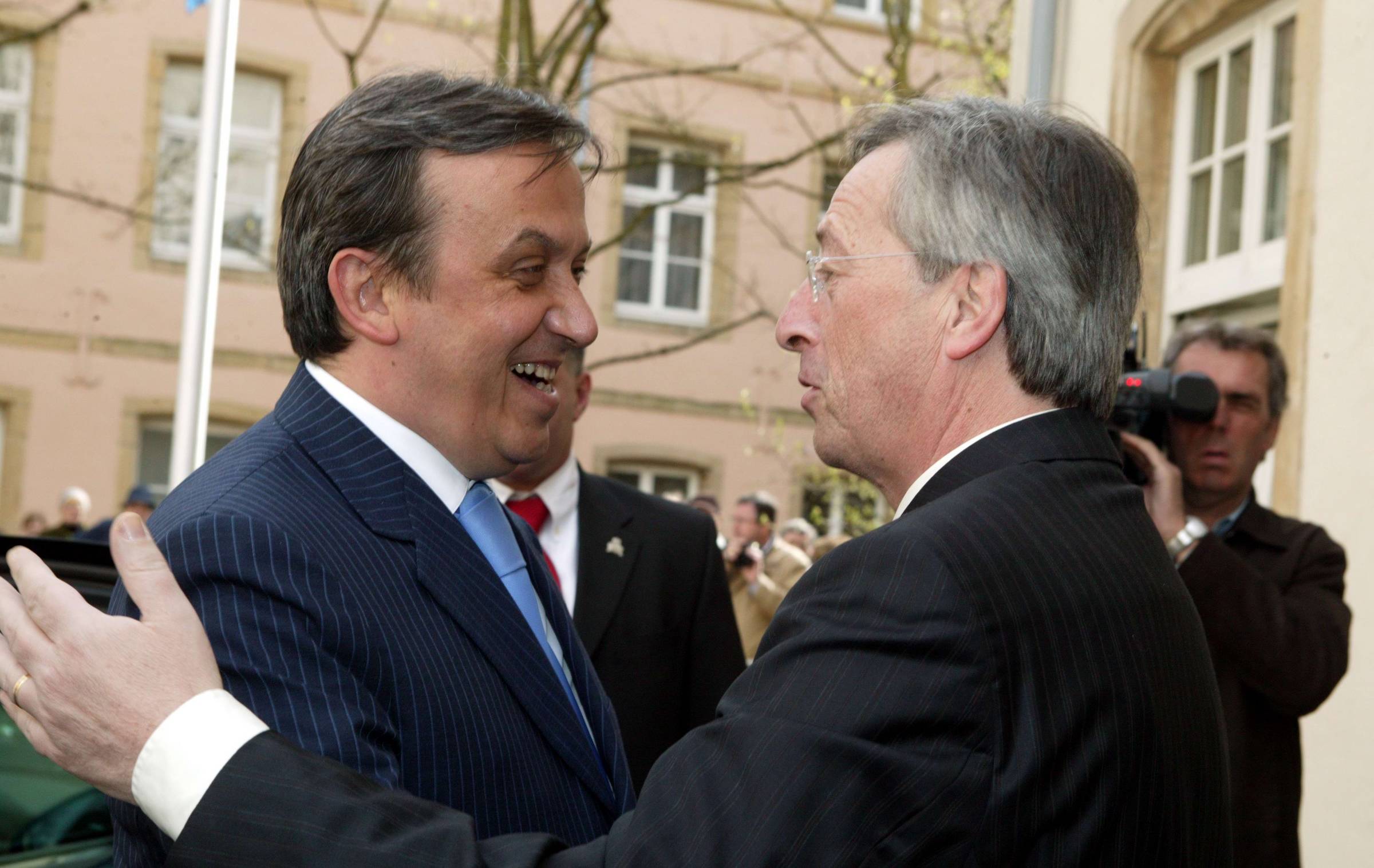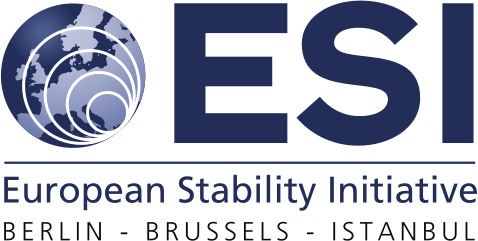A unifying goal for Bosnia
Adnan Terzic and his European vision
“I was trying to find a goal that no nation in Bosnia would have a problem with,” says Adnan Terzic about his early push for European integration when he was prime minister of Bosnia and Herzegovina from 2002 to 2006.
Like many citizens of Bosnia and Herzegovina, Adnan Terzic saw the course of his life radically altered by the 1992-1995 war. He grew up in Travnik, a town in the mountains of central Bosnia, which was once the seat of the viziers of the Ottoman Empire. It is also the setting of the “Bosnian Chronicle” of Nobel Prize winner Ivo Andric, a colourful story about Bosnia’s peoples and their existence at the fault line of different empires.
Born in 1960, Terzic spent a happy childhood in this town steeped in history. He then went to Sarajevo to study geodesy, the science of measuring the earth, following in the footsteps of his father. In 1986, Terzic started working for the municipality of Travnik as a geodetic engineer.
Accustomed to multicultural life in central Bosnia where Muslim Bosniaks, Catholic Croats and Orthodox Serbs had lived together for centuries, he did not expect the fighting that had erupted in neighbouring Croatia in 1991 to reach Bosnia. It did, however, and he, as a Bosniak, was drafted into the Bosniak-dominated Army of Bosnia and Herzegovina. The war was “a catastrophe for Bosnia”, he said. It also affected him personally.
“My son was born in December 1992 and the fighting with the HVO [Bosnian Croat forces] started in April 1993. Travnik was completely blocked. We had no electricity, no water, not enough food, and a small baby at home.”
Fortunately, the family survived the war unscathed. When the fighting in Bosnia ended in 1995, Terzic went into politics and soon became the mayor of Travnik for the SDA (Party for Democratic Action), the main Bosniak party.
“Before the war, politics did not interest me. I was interested in hundreds of other things, but not politics. But after what happened to me, after losing four years of my life to fighting a war, I wanted to make a contribution, I wanted to try to re-establish relations and to prevent all the destructive consequences that this war could have.”
Less than a year later, in 1996, Terzic was appointed as one of two co-governors of the Central Bosnia Canton, one of ten cantons of the Bosniak-Croat Federation (after the war, Bosnia and Herzegovina had been divided into two so-called “entities”, the mainly Bosniak-Croat Federation, consisting of ten cantons, and the Serb-dominated Republika Srpska). Central Bosnia Canton was administered under a “special regime,” as it was comprised of almost equal populations of Bosniaks (148,000 people before the war) and Croats (132,000) with few of the 41,000 pre-war Serbs remaining. This meant that Bosniaks and Croats shared power on an equal basis. The post of governor rotated between a Bosniak and a Croat, and the principle of equal representation of Bosniaks and Croats in the cantonal administration was meticulously observed.
“My first priority as governor was to rebuild everything that had been destroyed during the war and to make it possible for people to return. We had to re-create the possibility of co-existence. Out of 11 municipalities that made up the canton, nine were divided. One part was controlled by the [Bosniak-dominated] Army of BiH, and the other by the [Bosnian Croat-dominated] HVO. I am proud that when I left in 2001, after two mandates at the helm of the canton, all of them had been reunited and in each municipality we had one mayor, who was the mayor of both Bosniaks and Croats …
It is true, it took a lot of energy, sensibility and a great deal of understanding for the other side to get there. In 1460, Travnik was first mentioned in legal books as a multi-ethnic place. It is clear that the clash between Croats and Bosniaks during the war had been imported and was politically instigated. This made it possible to start to rebuild trust quite soon.”
Terzic remembers that he asked for a Christmas tree to be set up in the entrance hall of the cantonal building when he became governor.
“This was in December 1996, right after I was elected governor. I asked our administration to get me the tallest fir that could fit in the entrance hall, to decorate it for Christmas, and to hang up a sign with ‘Merry Christmas’. And when the Croats came to work, they looked and asked: ‘What is going on here?’ They were used to having to fight for such things. This was a good start of our cooperation. I can’t say that it was easy at the beginning. Positions were still very entrenched. We had to find topics where there was a common interest. But things got better over time.”
He also recalls attending the funeral of an ethnic Croat policeman in 1998 who had been killed by a car bomb. Bosnian Croat media accused “Bosniak extremists” of murdering him.
“We had worked a lot on reuniting the police [after the war there were separate Bosniak and Croat police forces]. And I thought about what to do. And I realised that I had to go to his funeral to show that I condemned this killing, there was no way around it. I must admit that many people at the funeral were staring at me. It was not easy for me, and I was also a bit afraid for my security, but I considered it my duty to be there.”
Terzic commends the international community for helping to facilitate the return of refugees and restore normalcy in central Bosnia. He also stresses the role of the International Criminal Tribunal for the former Yugoslavia (ICTY), which indicted six Bosnian Croats as early as 1995 for crimes committed in Central Bosnia during the war. Later on, more Bosnian Croat (and Bosniak) commanders, soldiers and civilian leaders from central Bosnia were indicted. Under pressure from Croatia, as many as eleven Bosnian Croat indictees surrendered in 1996 and 1997.
“Right after the war, these people from the HVO who were suspected of having committed war crimes were indicted and sent to [the ICTY in] The Hague – in fact, [Croatian President] Tudjman sent them there. After that, there were hardly any people left who opposed the process of rebuilding trust and returning refugees. This is another reason why we succeeded in central Bosnia.”
Between 2000 and 2002, Terzic headed the faction of SDA deputies in the Federation House of Representatives. Following the national elections in 2002, he became the Prime Minister of Bosnia.
“During the pre-election campaign, all the parties had campaigned on integration into the EU, even the [ultra-nationalist] Serb Radical Party did. So I said, ‘Ok, let’s offer our citizens that we energetically go towards Europe by reforming society and introducing European standards. It took a bit of time for the OHR [Office of the High Representative, overseeing the implementation of the 1995 peace agreement] and other international institutions to accept this, because the elections had been won by the so-called national parties and expectations were that Bosnia would become a black hole, that we would ruin Bosnia …
I was trying to find a goal that no nation in Bosnia would have a problem with. At the time I did not know much about Copenhagen criteria and the enlargement process. Today I know that the EU has never had, and might never have, a better political instrument than enlargement. I am not sure how many EU officials are aware of how powerful an instrument this is. I don’t know how they developed it, but it has made the democratisation of the former Communist block a surprisingly resolvable issue. And I saw a chance for Bosnia in it.”
At the time, Bosnia had just completed 18 requirements for the launch of a feasibility study by the European Commission which would assess Bosnia’s readiness for starting negotiations of a Stabilisation and Association Agreement (SAA) with the EU.
“I insisted on getting the questionnaire for the feasibility study. I even travelled and spoke to other prime ministers. Their argument was that we were still not ready. I insisted with Paddy Ashdown [High Representative in Bosnia 2002-2006]. Of course, I met with [Romano] Prodi, at the time the Commission President, and asked for the questionnaire.”
The lobbying was successful: Terzic received the questionnaire in March 2003. He pushed Bosnia’s administration to provide replies for the 350 questions as soon as possible.
“I assembled all the responsible ministers and the head of the Directorate of European Integration, and we went to Neum [at the Adriatic coast] and sat down for three days, taking a close look at what we had and unifying the answers. We also wanted to show that we were aware of the meaning of this process ... For us, this was a great experience and perfect preparation to design a strategy towards Europe.”
Terzic says that he made great efforts towards working with Bosnia’s two entities, the Republika Srpska and the Federation, which function largely autonomously.
“The two entity prime ministers [the late Ahmed Hadzipasic and Dragan Mikerevic] were very good. The three of us worked together. I took time to talk to them and to their ministers. I had regular meetings with the ministers at state-level and with the entity governments. We analysed the problems and discussed them. I understood their problems, fears and capacities. We also had meetings on Mrakovica [mountain and recreational area in Republika Srpska]. Sometimes we sat there for seven, eight hours. But we always finished these meetings, irrespective of how difficult and dramatic they were, with a new prospect, a new strategy how to improve the situation in Bosnia.”
The European Commission announced the results of the feasibility study in November 2003: Bosnia would be ready for SAA negotiations once it achieved progress on 16 priority issues.
“I heard that they were making bets in Brussels that we would not be able to meet the requirements in five years. And we got organised. I piled enormous pressure on all the ministers that had to do something, in particular those that had to draft a law. We managed to achieve progress in half a year. I think we proved that our wish for European integration was not just rhetoric, but the essence of our work. Our intention was to show that we were aware that we needed to work to reach a position where we would become a serious partner for the EU.”

The SAA negotiations, however, got substantially delayed by (the lack of) police reform, introduced on the insistence of OHR as a special condition for Bosnia that no other country had to meet. Eventually the view that Bosnia cannot be held to different standards than any other country prevailed and the agreement was initialised on 4 December 2007 (for a detailed account see ESI’s paper The Worst in Class, 8 November 2007).
By that time, Terzic was no longer in government. His party, the SDA, had not performed well in the 2006 elections, and he had disagreements with the party leader. In the end, he left the SDA to work for a big insurance company.
In 2009, he joined a newly formed party, the SBB BiH (Union for a Better Future of BiH). In October 2010, Bosnia will go to the polls with SBB BiH on the ballot. If it manages to come to power, possibly as a coalition partner, Terzic has highflying plans.
“We should try to get candidate status in 2011. This would mean that the SAA is implemented, that we have resolved the OHR issue, etc. Then the new relationship between the EU and BiH could become the starting point for the authorities to devote themselves seriously to the integration process.”



